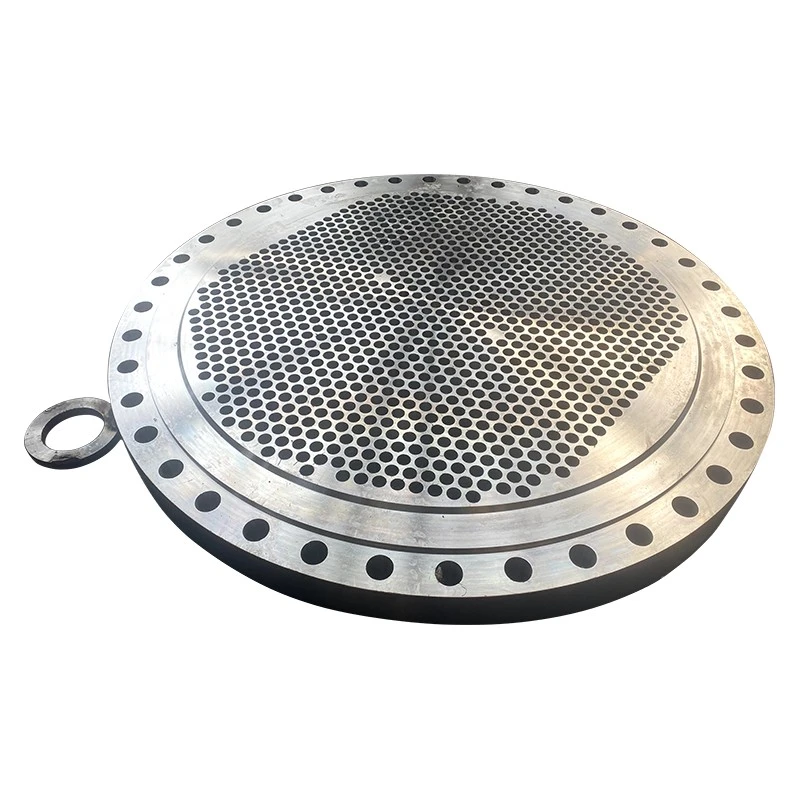Tube sheets are mainly used in chemical containers, such as shell-and-tube heat exchangers and seawater desalination, to support and fix the tubes. The metal material makes it not only very rigid, but also has great thermal conductivity. In its use, tube sheet anti-corrosion is a very important task. Why is this?

When making shell-and-tube heat exchangers, manual arc welding is generally used for welding tube sheets and tubes. There are defects of varying degrees in the shape of the welds, such as depressions, pores, slag inclusions, etc., and the distribution of weld stress is also uneven. When in use, the tube sheet part is generally in contact with industrial cooling water, and the impurities, salts, gases, and microorganisms in the industrial cooling water will cause corrosion to the tube sheet and welds, which is what we often call electrochemical corrosion. Studies have shown that industrial water, whether fresh water or seawater, will have various ions and dissolved oxygen, among which the concentration changes of chloride ions and oxygen play an important role in the corrosion shape of metals. In addition, the complexity of the metal structure will also affect the corrosion morphology. Therefore, the corrosion of the tube sheet and the tube weld is mainly pitting corrosion and crevice corrosion. From the appearance, there will be many corrosion products and sediments on the surface of the tube sheet, and there are pits of varying sizes. When seawater is used as the medium, galvanic corrosion will also occur. Chemical corrosion is the corrosion of the medium. When the heat exchanger tube sheet contacts various chemical media, it will be corroded by the chemical medium. In addition, the heat exchanger tube sheet will also produce a certain amount of bimetallic corrosion between the heat exchanger tube sheet and the heat exchange tube. Some tube sheets are also eroded by corrosive media for a long time, especially fixed tube sheet heat exchangers, and there are temperature difference stresses. The connection between the tube sheet and the heat exchange tube is very easy to leak, resulting in failure of the heat exchanger.
If you want to solve this problem, we can choose Solei carbon nanopolymer material, which has good mechanical properties, physical properties, and corrosion resistance. It can not only effectively solve the problem of tube sheet corrosion, but also have a good anti-corrosion effect. We have also strengthened predictive maintenance, using the Internet and sensor technology to assist users in implementing round-the-clock online monitoring, intelligent early warning and diagnostic analysis, and promptly discover and eliminate potential equipment failures to prevent risks and reduce equipment operating costs.
Copyright © 2024 Zhejiang Shuangneng Steel Industry Co., Ltd. All Rights Reserved. Links Sitemap RSS XML Privacy Policy